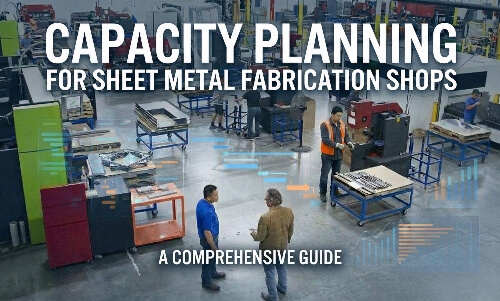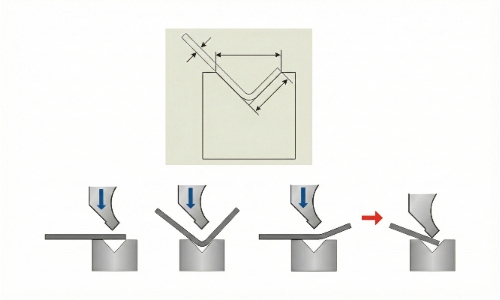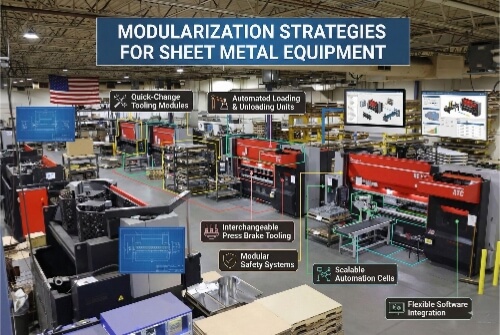あなたのプロジェクトには、強くて薄くて柔軟なアルミニウムが必要ですか?それを可能にするのが圧延工程です。この方法によって、アルミニウムは自動車、建築物、包装に使用される板やプレートになります。その工程を見てみましょう。
考え方はシンプルですが、結果は強力です。アルミ圧延の基本を知ることで、より良い決断を下し、よりスムーズにプロジェクトを完了させることができます。ここでは、アルミニウム圧延の仕組みについて、順を追って説明します。
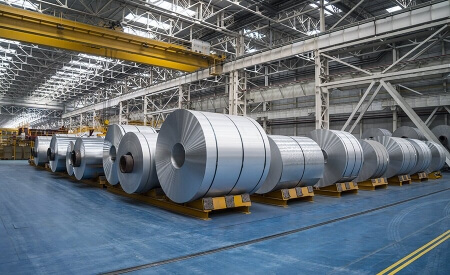
アルミ圧延とは?
アルミニウム圧延とは、アルミニウムのインゴットまたはスラブを、回転するローラーを使ってより薄い形状にプレスすることです。圧延方法にもよりますが、アルミニウムは通常、加熱または室温に保たれた大きなブロックから始まります。ローラーが押し下げられると、金属が圧迫されて引き伸ばされ、正確な厚さとサイズの平らな板になります。
このプロセスは、塑性変形の原理に基づいています。アルミニウムがローラーの間を通過する際、金属の降伏強度を超える力がかかる。これにより、内部構造が伸び縮みし、永久的な形状の変化が生じます。圧延は厚みを減らすだけでなく、結晶粒組織を改善します。これにより、アルミニウムはより強くなり、表面仕上げも良くなります。
圧延工程の種類
アルミニウム圧延は、目的に応じてさまざまな温度で行うことができます。それぞれの方法がアルミニウムを独自の方法で変化させ、他の用途に適したものにします。
アルミニウムの熱間圧延
熱間圧延は非常に高い温度で行われ、通常は400℃を超える。これはアルミニウムの再結晶点よりも高い温度です。この熱でアルミニウムは柔らかくなり、成形しやすくなります。大きなスラブまたはインゴットは、まず炉で加熱されます。その後、厚さを段階的に薄くするローラーに通します。
この方法では、1回のパスでサイズや形状を大きく変えることができる。また、小さな隙間をなくし、より柔軟にすることで、金属の内部構造を改善します。熱間圧延アルミニウムは、多くの場合、冷間圧延やその他の仕上げ加工などのさらなる工程のベースとなります。強度と容易な成形が必要な板、自動車部品、航空宇宙部品などに広く使用されています。
アルミニウムの冷間圧延
冷間圧延は、熱間圧延の後に室温で行われる。この段階でアルミニウムはすでに薄くなり、扱いやすくなっています。冷間圧延機で再び金属をプレスすることで、さらに薄く、滑らかに、正確なサイズにすることができます。
熱を使用しないため、アルミニウムはひずみ硬化によって強化される。その結果、より強度の高い材料、より優れた表面仕上げ、より厳密な寸法管理が可能になります。冷間圧延アルミニウムは、電子機器、包装用ホイル、装飾用シートなど、精度と外観が不可欠な場合によく使用されます。
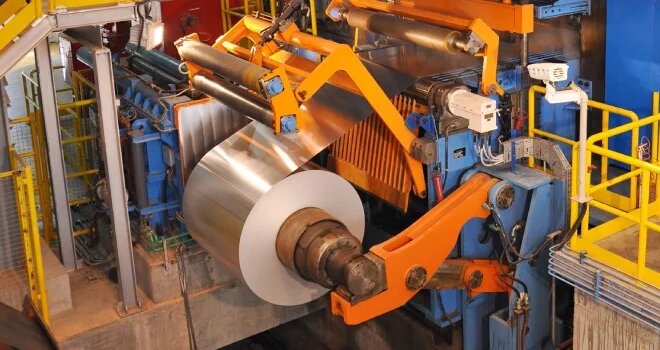
アルミニウム圧延工程はどのように行われるのか?
アルミニウムの圧延工程は、一連の制御されたステップに従います。各工程では、材料を適切な厚さ、強度、表面仕上げに成形します。
ステップ1:アルミニウムのインゴットまたはスラブの準備
その工程は、溶けた大きなアルミニウムの塊やスラブから始まる。これらのブロックは厚く重いため、工業用には使えない。圧延する前に、作業員は表面に欠陥がないか検査し、粗いエッジを切り落とす。場合によっては、きれいで滑らかな表面を作るために、メッキと呼ばれる工程で表面層を削り取ることもある。
ステップ2:ローリング前のヒーティングとコンディショニング
熱間圧延では、スラブは大きな炉で400℃以上に加熱される。この温度でアルミニウムは柔らかくなり、成形しやすくなる。慎重な管理が不可欠である。金属は再結晶点以上融点以下に保たれなければならない。この範囲で加熱すると、結晶粒組織が改善され、内部応力が低下するため、圧延がより滑らかになります。
冷間圧延では加熱はしません。その代わりに、酸化物、油、その他の表面汚染物質を除去するために、アルミニウムを洗浄または処理することがあります。この工程により、滑らかな表面が確保され、欠陥が完成板に持ち込まれるのを防ぐことができます。
ステップ3:複数のパスでローリングする
その後、スラブは大型の回転ローラーを備えた圧延機に送られる。目標の厚さに達するのは1回ではありません。その代わり、アルミニウムは何度か通され、そのたびにローラーがアルミニウムを薄く押し、板状に延ばしていきます。
熱間圧延では、これらのパスは金属が熱いまま行われる。材料が冷えすぎると、再加熱が必要になる。冷間圧延では、1パスあたりの圧下率を小さくします。これにより、板材の寸法精度が高まり、表面が滑らかになります。
ステップ4:冷却と圧延後のトリートメント
圧延が完了すると、アルミニウムは制御された条件下で冷却される。強度を保つために急冷する製品もあれば、応力を緩和するために徐冷する製品もあります。
冷却後、追加処理を行うこともある。焼きなましは、冷間圧延で失われた柔軟性を回復 させるために、結晶粒組織を再形成させるために行 われることが多い。また、最終用途に備えるため、トリミング、洗浄、コーティングなどの表面仕上げを行うこともある。
アルミニウム圧延製品の分類
アルミニウム圧延材には多くの形状があり、それぞれが特定の用途向けに設計されています。厚さ、合金の種類、仕上げによって、建設、包装、輸送、航空宇宙産業における材料の性能が決まります。
ゲージを理解するフォイルからプレートまで
圧延アルミニウムの厚さは、ゲージまたはミリメートルで測定されます。アルミ箔は通常、最も薄い部分で0.2mm以下の厚さである。食品包装、断熱材、電子機器などに広く使用されている。
アルミニウムの薄板は0.2mmから約6mm。自動車のボディパネル、建物の外壁、家電製品の筐体などによく使われている。薄板は軽量でありながら強度があるため、日用品として実用的です。
アルミニウム板は厚く、一般に6mm以上である。航空宇宙パネル、造船、重機などに使用される。板材は剛性と耐久性が高く、高荷重や過酷な環境に直面する部品に適している。
標準合金と圧延後の用途
アルミニウム圧延品が純粋なアルミニウムから作られることはほとんどありません。性能を向上させるために合金が加えられます。
- 1xxxシリーズは、ほぼ純粋なアルミニウムを含んでいます。柔らかく、耐食性に優れているため、化学装置や箔に適しています。
- 3xxxシリーズはマンガンを含む。強度に優れ、屋根材、サイディング、飲料缶などによく使われる。
- 5xxxシリーズはマグネシウムを含む。耐食性に優れ、強度は中程度で、海運・運輸業界で広く使用されている。
- 6xxxシリーズはマグネシウムとシリコンを組み合わせたもの。強度、耐食性、機械加工性のバランスがよく、自動車パネルや構造部品に人気がある。
- 2xxx シリーズと 7xxx シリーズは、非常に高い強度と耐 疲労性を備えている。これらは、応力下での性能が重要な航空宇宙および防衛分野で一般的です。
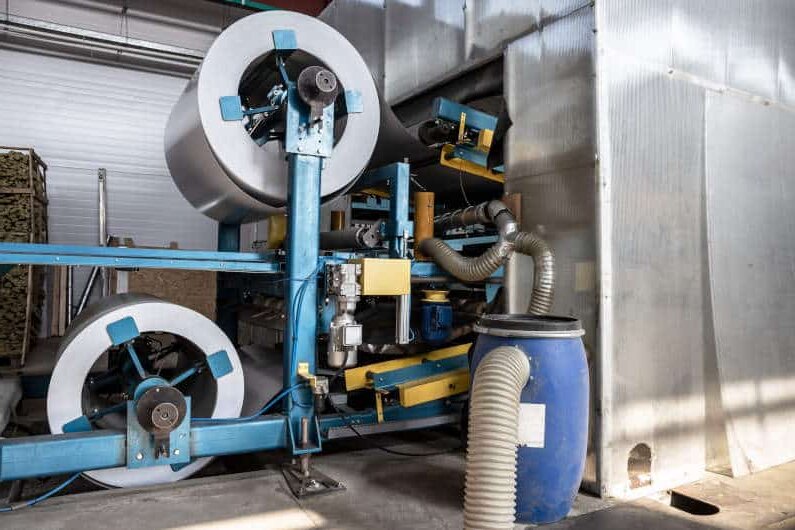
圧延後の表面仕上げ
圧延後、アルミニウムはしばしば表面仕上げを必要とする。仕上げは、外観、強度、性能を向上させます。さまざまな方法で金属を保護し、特殊な用途に備えます。
機械仕上げ
機械的仕上げは物理的な方法で表面を変化させる。標準的な手法としては、ブラッシング、サンディング、ショットブラストなどがある。
ブラッシング 家電製品や装飾パネルによく使用されます。サンディングは表面を平滑にし、コーティングや更なる加工ができるようにします。 ショットブラスト 小さな研磨粒子で表面を叩き、洗浄し、強化する。
コーティングと保護膜
コーティングはアルミニウムを保護し、寿命を延ばします。 陽極酸化処理 は、天然の酸化皮膜を厚くし、表面をより複雑で耐摩耗性のあるものにする標準的なプロセスである。また、装飾のために色を加えることもできる。塗装は、特に建築や自動車部品において、外観と保護を向上させる。 パウダーコーティング 長持ちし、丈夫で均一な仕上がりになるため、アウトドア用品に人気がある。
海洋や化学産業のような過酷な環境では、さらなるレイヤーが必要となる。 エポキシ・コーティング または化成皮膜は、腐食に対する追加のバリアを提供します。これらの仕上げにより、メンテナンスが軽減され、長期信頼性が向上します。
研磨とブライト・ローリング
研磨 は表面を滑らかにし、反射させます。細かい砥粒が細かな欠陥を取り除き、鏡のような仕上がりにします。建築用パネル、照明器具、装飾トリムなどによく使われます。
ブライト圧延は、反射面を作るもう一つの方法である。最後の圧延は、高度に研磨されたローラーで行われます。圧力と滑らかなローラー表面により、アルミニウムは明るく光沢のある仕上がりになります。この方法は、外観が重要な包装用ホイル、反射板、インテリア製品では標準的です。
アルミニウム圧延材の産業用途
アルミニウム圧延材は、軽くて丈夫で用途が広いため、多くの産業で使用されています。フォイル、シート、プレートなどの形状によって用途が決まります。
自動車
自動車業界では、圧延アルミニウムは強度を保ちながら車両重量を軽減します。板材はボディパネル、ボンネット、ドア、トランクリッドに使用されます。板材は、剛性が不可欠なシャーシやサスペンション部品に使用されます。箔や薄板は、熱交換器や断熱材に使われます。
航空宇宙
航空宇宙分野では、高い強度対重量比を持つ圧延アルミニウム板や薄板が重用されています。航空機のスキン、胴体パネル、翼構造には、2xxxおよび7xxxシリーズ合金がよく使用されます。これらの合金は疲労に強く、過酷な条件下でも優れた性能を発揮します。キャビン・パーティション、床材、座席構造には、より薄い板材が使用される。
建設
アルミニウム板は耐食性に優れ、成形が容易なため、屋根材、クラッディング、カーテンウォール、サイディングの標準的な材料となっている。板材は、構造フレームワーク、橋梁、大規模なインフラプロジェクトに使用されます。アルミニウムは耐候性に優れ、屋外でも長持ちします。
消費財
圧延アルミニウムは多くの消費者製品に使用されている。箔は食品包装、断熱材、家事に使用される。シートは、冷蔵庫、洗濯機、電子レンジなどの家電製品の部品を形成しています。明るい圧延仕上げは、電子機器、台所用品、装飾品の外観を向上させます。
結論
アルミニウム圧延は、柔軟で広く使用されているプロセスです。未加工のアルミニウムを、正確な寸法、優れた強度、滑らかな表面を持つ板、プレート、箔に加工します。圧延アルミニウムは軽量で耐久性があり、高性能であるため、あらゆる産業で信頼されています。
次のプロジェクトに高品質のアルミニウム圧延材が必要ですか? お問い合わせ をご覧ください!

ケビン・リー
レーザー切断、曲げ加工、溶接、表面処理技術を専門とし、板金加工において10年以上の実務経験があります。シェンゲンのテクニカルディレクターとして、複雑な製造上の課題を解決し、各プロジェクトにおける革新と品質の向上に尽力しています。


